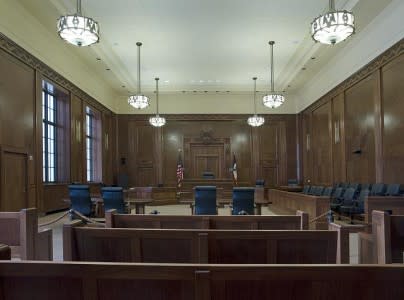The federal court system will feel shutdown pains
While the Supreme Court will operate as usual, for now, during the partial federal government shutdown, the rest of the federal court system will face a cash crunch in less than two weeks.
The Supreme Court will hear arguments starting on October 7 and it issued orders this Tuesday. On its website, the Court said its building is open this week, and it will have weekly updates on its operational status during the shutdown.
As a point of reference, the Court remained open for business during the Clinton-Gingrich shutdown battle of 1995 and 1996.
But the remainder of the federal court system could face serious issues beyond October 15, if the shutdown is still in effect.
That is entirely possible, given that the debt-ceiling deadline is October 17, and there are growing concerns that a shutdown deal won’t be cut until there is a debt-ceiling deal.
Judge John Bates, secretary of the Judicial Conference and director of the Administration Office of the federal courts, said just before the shutdown that the federal court system had funds to stay mostly operational for 10 business days.
The federal court system was already dealing with severe financial and operational issues related to the sequester, the across-the-board spending cuts that came out of the last budget battle in Washington.
So what happens after October 15 after the federal courts have used up cash from fees and other sources?
Many workers will need to be furloughed, while others will work without pay (and then get back pay after the shutdown ends).
It will be up to regional judges to decide which employees are essential and stay on the job, and which ones are sent home.
A spokeswoman for the Administration Office told Reuters that these judges will have the full power and latitude to make furlough decisions.
“Each court is going to be different,” said Karen Redmond.
The Justice Department wants to postpone its appearances in civil and bankruptcy cases, as long as such acts don’t violate the Anti-Deficiency Act by compromising safety and property.
But the Justice Department is expected to continue its role in criminal cases in an uninterrupted fashion.
Federal judges won’t be among the furloughed employees, but some judges might not get paid until the shutdown is over.
Also, payments to court-appointed defense lawyers and jurors could be delayed.
On Tuesday, Southern District of New York U.S. District Judge Loretta Preska agreed with a Justice Department request to delay most civil cases (other than civil forfeiture cases).
Back in September, Judge Bates wrote to President Barack Obama, requesting that the federal judiciary receive adequate funding to “meet its constitutional and statutory obligations.”
Judge Bates said several years of flat budgets followed by the sequester cuts “have had a devastating impact on court operations nationwide.”
“I hope that you and the Congress will recognize the uncontrollable nature of our workload and provide the resources necessary for the Judiciary to perform its essential constitutional functions,” he said.
Recent Constitution Daily Stories
A look at Obamacare’s top constitutional challenges
Lincoln’s comments from 1861 relevant to today’s government shutdown


